STOP LINES
Devizes consisted of part of the Blue Stop Line which eventually connected to the Green Stop Line which surrounded the Bristol Area. The Green Stop line was to be the last remaining stronghold should a German land based attack be successful. As history shows the German forces contemplated an attack on England which was named Operation Sealion (Unternehmen Seelöwe).
On 16 July 1940 Hitler issued Directive Number 16. It read, 'As England, in spite of the hopelessness of her military position, has so far shown herself unwilling to come to any compromise, I have decided to begin to prepare for, and if necessary to carry out, an invasion of England... and if necessary the island will be occupied.' Despite having no invasion plan prepared Hitler announced that an invasion force would be ready to sail by 15 August.
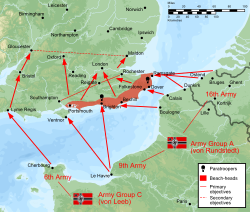
German tactics were expected to be the same as used in France. Armoured columns could be expected to push on regardless of support and flank protection. An armoured formation landed on a beach could function as a unit almost immediately. Infantry on the other hand would have to wait until transport and guns were unloaded before they could become mobile. The main danger therefore came from the armoured fighting vehicles. The German objectives were considered to be London and the Centers of Production and Supply in the Midlands the North.
The policy of defence to be adapted was a combination of offensive mobile columns and static defence by means of strong points and “stops”. As mobile columns could not operate over the whole area threatened by invasion, measures would be required to limit enemy movement until the mobile reserves could arrive for counter-attack. This would be done by a system of strong points and “stops” distributed in depth to cover London and the Centers of Production and Supply –to “prevent the enemy running riot and tearing the guts out of the country” as happened in France and Belgium.
Inland areas were to be divided into zones consisting of a series of “stops” cumulating in the GHQ Zone of Stops (also known as the GHQ Stop Line) which would be sited to cover London and the main industrial centers. These “stops” were to consist of defences of anti-tank obstacles, pillboxes, wire and static anti-tank guns. The bulk of available 2 pounder anti-tank guns (167 in all by mid-June) were to be placed in these “stops” rather than used for beach defence. Five of these “stops” lay across East Anglia to check advances inland (either towards London or towards the Midlands) from a force landed in the vicinity of Lowestoft and three crossed Kent, Sussex and Surrey to cover London from the South and South-east.
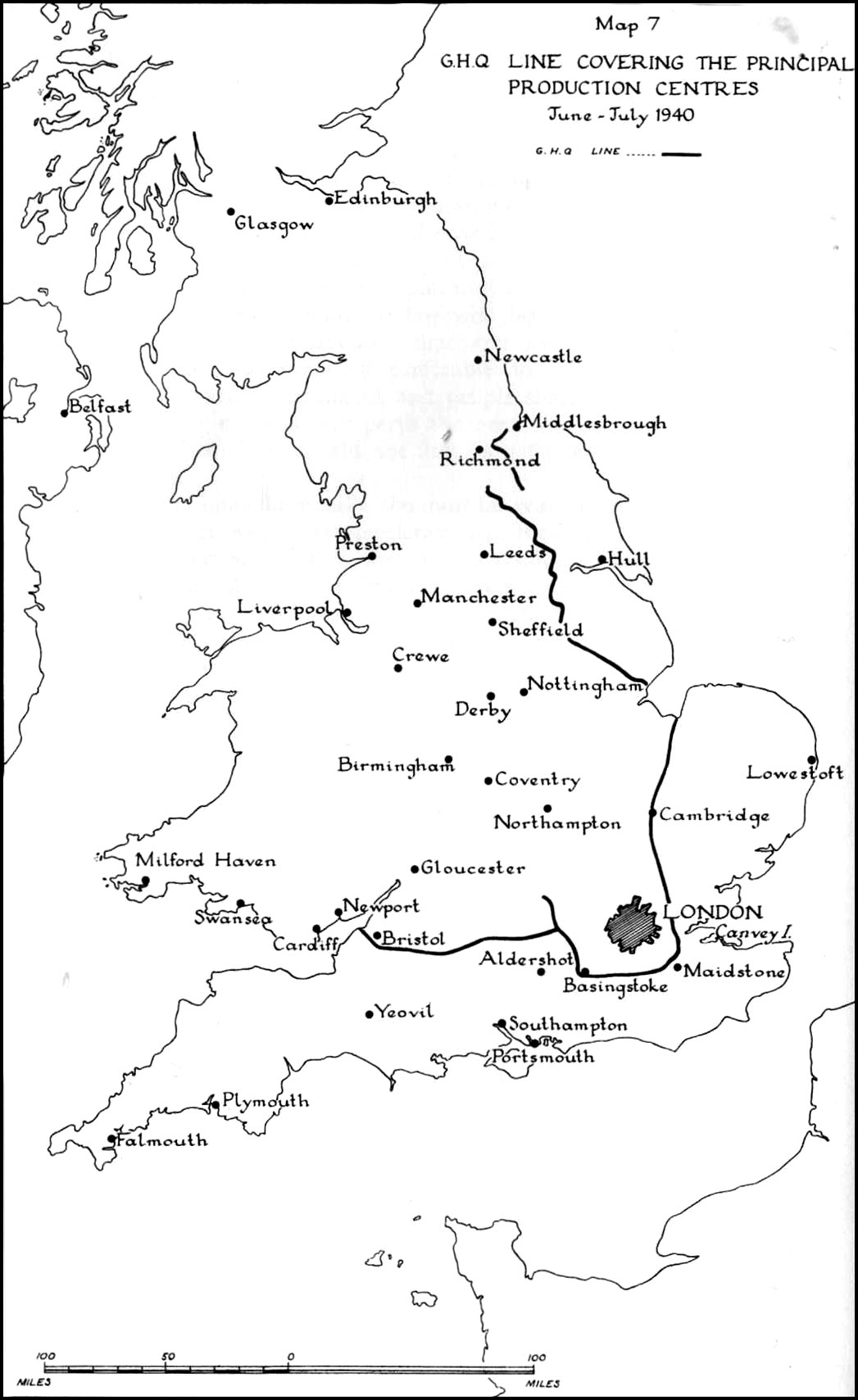

Above: Proposed GHQ Zone of Stops - the GHQ Anti-tank Stop line. In reality little work was done on the line in the area of Northern Command and no work at all in the area of Scottish Command.
1. Waterways and other natural obstacles such as steep hills. As waterways provided an effective obstacle it was intended to hold these lightly in order to concentrate forces for the remainder, weaker stops. Waterways were to be made into Demolition Belts by preparing bridges and crossings for demolition. Waterways at right angle to the main line of enemy advance were of the greatest value as they would hinder lateral movement of the attack and were to always be included in Demolition Schemes.
2. Where no waterways existed the “stop” was to be organized in great depth. It was to consist of an artificial obstacle (ditch or minefield) covered by pillboxes and the bulk of the remaining anti-tank guns.
Mobile reserves were to be held behind the GHQ Stop Line, ready to be deployed once the enemy attack had been delayed and canalized. In reserve was the 1st Armoured Division (although under half strength) and three of the better equipped infantry divisions dispersed in the area Aldershot-North London-Northampton so as to be able to act as independent mobile brigade groups. In addition the 2nd Armoured Division was located in the Northampton-Newmarket area, equipped with 178 light tanks so as to be able to operate against the flank or rear of any enemy troops landed in East Anglia or north of The Wash. C.I.C Home Forces (General E Ironside) considered there was little value in keeping large local reserves near the coast for counter-attack as the beach defence Divisions were still lacking in weapons and training which he considered would give little chance of success of any locally organized counter-attack.
The LDV were to keep a lookout for parachutists, Fifth Columnists and man certain road blocks. Anti-Aircraft defences (batteries and searchlights) were also to form anti-parachute parties and to place themselves under the order of local military commanders if they could no longer perform their A.A role.
It was anticipated that Germany now had access to sufficient aerodromes in the occupied countries to operate its entire air force against Britain, although a number of the runways did not have water proof surfaces so could only operate in dry weather.
It was also noted that invasion could occur in any season – the long dark nights of winter would give the enemy an opportunity to launch an invasion flotilla undetected but on the other hand rough seas often present during winter would preclude the use of barges and other small craft.
This trip out served two purposes for me. When i was 6 my dad was posted back from Hong Kong and did a 6 month stint here before being posted back to Germany. i therefore wished to view my old house and the school i used to go to. It's funny how time distorts perspective. The road i lived in looked familiar but not the area.
The first day in the area was wet and drizzly and it wan't much fun slipping and sliding out on the tow paths. It was tiring and time consuming.
Getting into Devizes on a bus replacement service seemed to take ages and so dampened my mood somewhat. Getting off at the nearest bus stop to the canal i headed out eastwards up to my final pillbox close to Horton Bridge. This section then completed the link up with a previous visit out to Horton on a loop in the canal. Anyhow after the slip and slide of the mud fest, i got to the first of the locations i wished to document.
ANTI TANK VERTICAL RAIL: S0008732
These were temporary defence points which used rail line or girders placed into the slot mounts. Usually set in staggered rows to cause a real hindrance to any tanks or armoured vehicles attempting to cross over the bridge or defended area. The canal was the natural anti tank 'ditch' that would have needed defending at all cost. The reality i feel would have been somewhat different against a very organised and battle hardened enemy force.

The view of the North side of the bridge showing the pillbox roof in the centre of the photo.





PILLBOX (TYPE FW3/22): S0008733
A shell proof Type 22 Brick shuttered. The shuttering was either made of wood, with the concrete being poured in around the rebar and back filled, or the brickwork way laid and then rebar and concrete poured in. This example is sealed off completely.







A little shelter from the rain...........

ANTI TANK BLOCK: S0006646
Anti-tank cubes standing alongside unclassified road where it curves away from the Kennet and Avon Canal. The 2 x cubes stand at opposite ends of a lay-by, 25 yards from a pillbox 2 x anti-tank blocks, cube-shaped with a pyramidal top, made of reinforced concrete. Situated on bend of road blocking access down track to canal. Steel loops are set into blocks.




Slightly off down the road and to the right is a Type 22 which would have covered the road approach. I could gain entry into this one and sat out another heavy bout of rain. The field of fire would have been South East.
PILLBOX (TYPE FW3/22): S0006645








The walk back into Devizes and the rain stopped briefly.

Taking a short detour off the canal path i can across this old abattoir.










Finally walking back into Devizes and almost at the point where i started out along the Kennet And Avon Canal is a shell-proof Type 22 sat high up on the bank on the left hand side. This pillbox was very well hidden and took quite some time to find.
PILLBOX (TYPE FW3/22): S0008731
Sat high up on a wooded banked area and offering what would originally have been a commanding view.It was very dank in there so much so i found frogs in residence, evidence historically of people living in there or storing camping equipment. Before the housing estate was build it would have had a clear field of fire facing South. The pillbox is in very poor condition.








ANTI TANK CYLINDER: S0008730
Brickham Bridge and sat on the south side of the bridge. Two cylinders constructed using huge drainage pipe, filled with concrete and then capped off with a dome.





Even though it was horrible weather out there on this day the scenery took my eye.

Originally the bridge below would have had a roadblock on it but this has been removed.

Quakers Walk Bridge. This would also have had a roadblock on one side of the bridge but i missed this one. If i'm in the area in the future - it's something to close off.

PILLBOX (TYPE FW3/22): S0008716
Dye House Lane. Type 22 pillbox constructed on high point of Dye House Lane. Field of fire South across canal and West. Brick-shuttering external, brick blast wall, and roof shuttered with breeze blocks. Sealed up and now marked as a listed building.






Shot through a loophole so apologies on the wonky photo.



Back out on the trail.

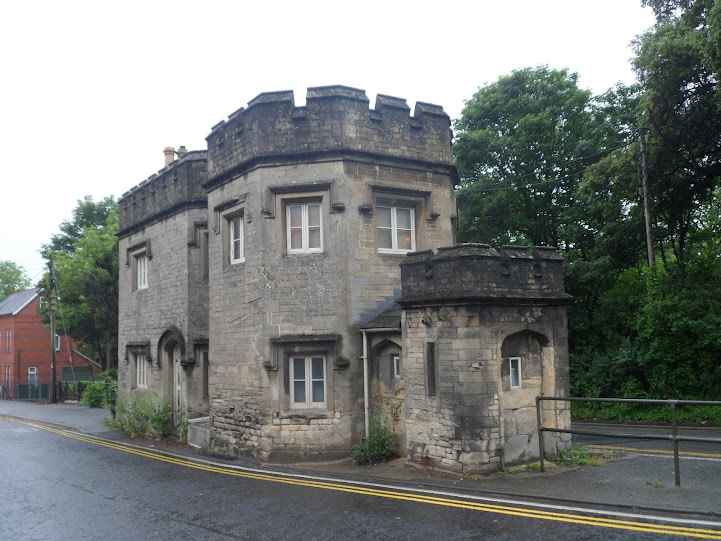
This is where the explore went off the rails due to the rain. I had to miss out quite a section of defences due to being either on private ground or the fact i was so wet at this point i just needed to get to the easier options first and then attempt the other defences on a drier day.



Marsh Lane Bridge.

ANTI TANK CYLINDER: S0008656




The view up to Caen Hill Locks. A welcome option for walking back to find a hotel for the night. The light was starting to fade at this point.




Finally into the town.





My respite for the night. Sat supping on a few beers and attempting to get dry.

Up the next morning for an early start it gave me the opportunity to wander around the town with very few people up and about.




Sells Green, Kennet and Avon Canal, Seend
PILLBOX (TYPE FW3/22): S0008704







Seend Wharf Bridge, Seend Cleeve. This section of defences is a considerable walk down the canal and hellish on my feet. Though the day was drying out i was almost a beaten man at this point and just wanted to go home and sleep and rest my tired old bones.
PILLBOX (TYPE FW3/28A): S0008699
Partially sealed and sat behind the hedgerow, unless specifically looking for the pillboxes in this section of canal, it would be so easy to miss them out. Southern facing.





Sat in the same section and just a little further back up the track. Entrance on N side and faces a parallel track. Grass camouflage remains on roof. Inside floods after rain, but otherwise intact.
PILLBOX (TYPE FW3/22): S0008701







Over on the bridge and on the same section of Canal Locks
ANTI TANK VERTICAL RAIL: S0008700



The view of the local area. Lovely.



Seend Bottom.
Type 22 pillbox on the North bank of the canal, with a field of fire South across canal towards Seend Cleeve. Wood-shuttered, with concrete blast wall. Earth on roof [camouflage]. Partly dug into the canal bank. The interior floods after rain (as was the case in this instance), but generally intact.
PILLBOX (TYPE FW3/22): S0008698
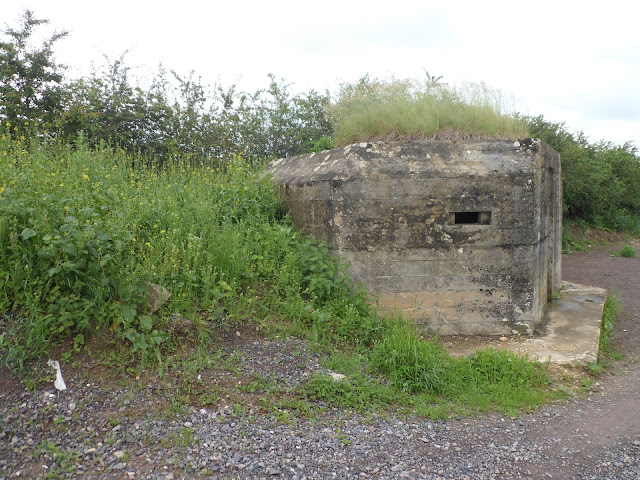





PILLBOX (TYPE FW3/22): S0008697
Type 22 pillbox, shell-proof. Completely overgrown on the canal side and it is easy to overlook it. Entrance faces field and is partly blocked with rubbish. There is evidence that the entrance may have had a door fitted at some time. Interior is untidy but generally intact.



Photos taken through the embrasures. Even I'm not that mad!!






PILLBOX (TYPE FW3/22): S0006799
Type 22 pillbox, largely overgrown with brambles. No access from towpath. The entrance faces an open field. The interior floods after rain. The structure is generally intact. Shell-proof.
And once again despite drying out significantly to feel comfortable - i decided to climb the barbed wire and track through the long grass.





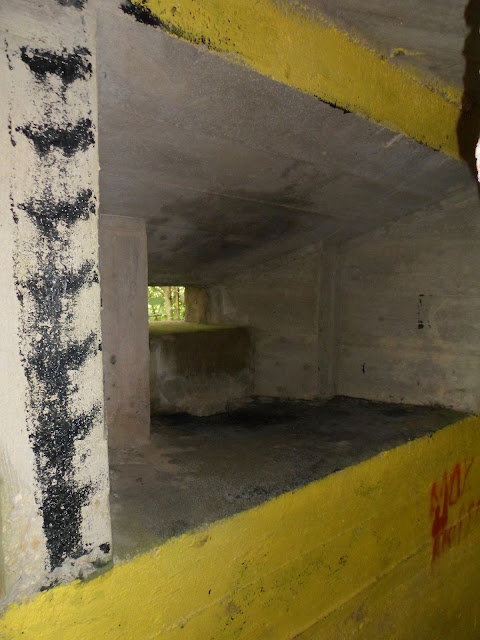
A small reward.

Concluding my explore, missing out too much to be really happy with this visit and walking back to Seend, i eventually found the destroyed remains of a pillbox that i thought was originally on the centre of a field in a copse of trees. It is sometimes very fulfilling to confirm the status of a pillbox or other defence works but this is also coupled with the initial frustration of attempting to find it.
PILLBOX (TYPE FW3/22): S0008703 (Removed)


Thanks for reading this report.
No comments:
Post a Comment